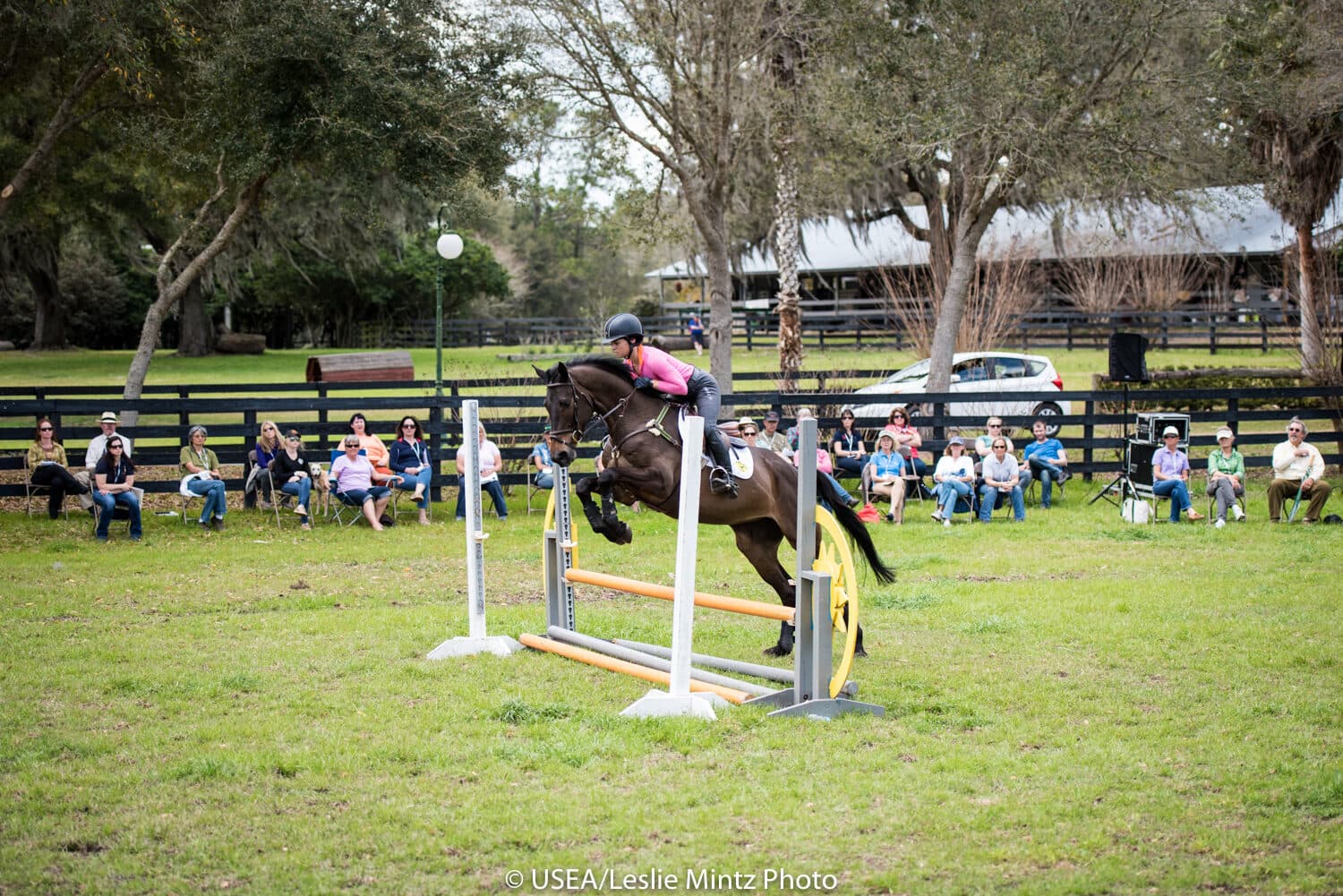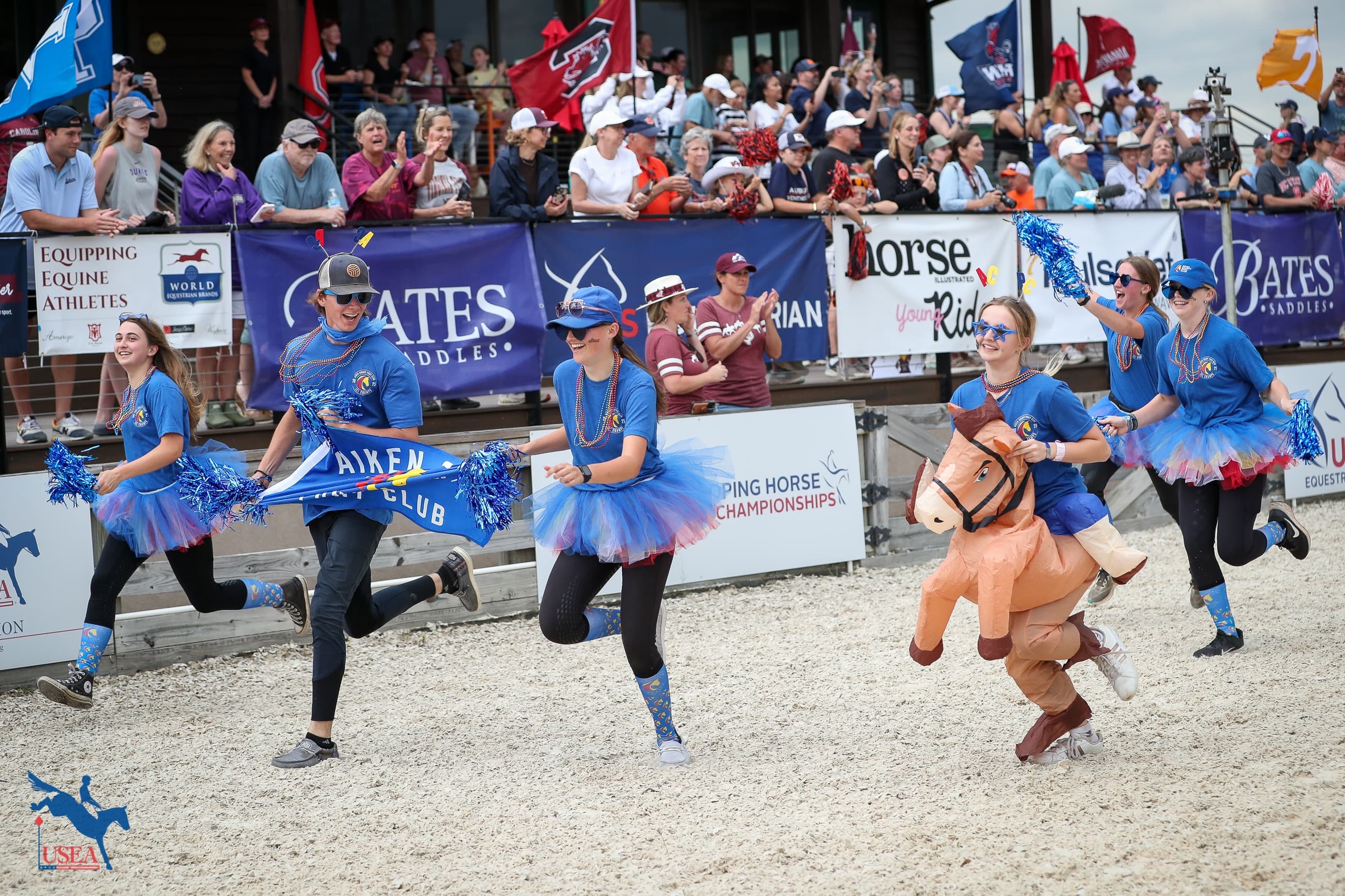Evaluation of the Young Event Horse Prospect Symposium Gives Attendees a Wealth of Young Horse Knowledge

The second day of the Evaluation of the Young Event Horse Prospect Symposium built upon the first with the focus moving to 4- and 5-year-olds. Marilyn Payne began the morning with an exciting announcement that Denis Glaccum and Didi Callahan have secured donations for a minimum commitment of $1500 for the top American bred horse at the USEA Young Event Horse (YEH) East Coast Championship and a second award that will be a minimum of $1000 to be awarded to the top American Thoroughbred at the East Coast YEH Championship. Ideally the funds will be raised for West Coast Awards as well and the USEA encourages any interested contributors to reach out.
Payne handed the microphone over to Kai-Steffen Meier, a top German event rider who is based on the German/Belgium border and is experienced with both country’s young horse series. The German system is the Bundeschampionat which is just for German-bred 5- and 6-year-olds and the horses qualify in special cross-country only classes plus a top placing in a full competition (1.00m for 5-year-olds and CIC*/CCI* for 6-year-olds). The Belgian system is open to horses 4- to 7-year-olds bred in any country and the horses qualify in classes that increase in difficulty throughout the year. Meier finds pros and cons with both systems and targets different horses at both Championships each year.
Meier is constantly sourcing and breeding young horses to develop into top horses for both himself and sale. When he looks at a young horse, Meier says he uses eight criteria to make the selection.
What horses are born with:
- Balance – can evaluate on a young horse in a field.
- Mouth – what do they do with the bit? Horses who are hard on the hand during the first six weeks of riding will stay like that for life.
- Athleticism
What the rider can improve:
- Braveness – a horse that is shy is hard to get to be brave, but they can learn over time.
- Intelligence – you don’t want a horse who arrives at a fence, doesn’t have the stride and still tries to jump it. A horse can put itself in a sticky situation once, but it needs to come out and learn from it.
- Mental strength – ability to cope with stressful situations.
What the rider has to train:
- Suppleness – we have to have horses who can adapt their stride and find a way out of a stumble up a step and move over a fence
- Bouncy – a horse who gets compact and hits the ground to really make a jump
“If you find a horse with all eight aspects just buy it,” said Meier. “Don’t think about the price, just do it. It is rare to find a horse with all the criteria and you often have to decide which you can live with or without.”
Once Meier has selected a prospect or one he has bred is ready to be started he prescribes to the following: a 3-year-old is ridden three times per week, a 4-year-old is ridden four times per week and a 5-year-old is ridden five times per week. The 3-year-olds are ridden in sections with six week holidays every six weeks, and Meier says that it is kindergarten – not real training just playing around. The 4-year-olds go to small shows and may be aimed at the Belgian Championships if they are ready, but they still get extended holidays and go out with older horses to get leads over cross-country obstacles. The 5-year-old year is when the real training begins with light conditioning work, more technical cross-country schooling and true dressage and show jumping schools.
Although Meier has a set program he uses he says, “Not every horse develops in the same way and the same speed, and not every horse is meant to be a Champion. You can still produce a horse that someone can have a lot of fun with whether at the two-star level or lower levels. It is always better to go a bit too slow than just a bit too fast when training a horse.”
Payne then gave a presentation with tips on how to present your horse at YEH competitions. She went through each phase and some of her advice included:
- During the dressage test don’t be overly concerned with geometry or head set, you’re your horse freely and forward to show off your horse’s gaits. Posting trot is recommended.
- Use the correct pace for show jumping and cross-country portions but don’t over control – let the horse show its natural instincts.
- Encourage uphill balance in the gallop and show longer, slower strides not fast and quick.
Payne also thanked all the wonderful owners who have supported the YEH program as well as Dr. Tim Holekamp and Christine Turner for their grant which allowed Debbie Adams to take her horse, D.A. Duras to Le Lion d’Angers last fall. Adams gave a presentation during the lunch break sharing her experience with her trip and Duras’ results.
Dr. Daniel Marks concluded the classroom portion of the day with a talk about how conformation relates to horse movement, jumping ability and gallop. He used photos of competition horses to illustrate the parts of the horse used in jumping and how various conformational structures enabled or inhibited a horse to do its job. Dr. Marks also touched on what keeps a horse sound for a long career and he said, “the problem with a horse staying sound for a long time is not when you start them, but at the age that you start to show it at a very high level.”
The attendees then moved back over to Longwood for the demo riding portion led by Meier, Payne and Leslie Law. Several demo riders brought their young horses over and Meier evaluated them both on the flat and over fences. Law rode a 7-year-old who he believes has four-star potential and both explained and demonstrated why the horse was special. Law and Meier then rode young horses they had never been on before and went through the steps they take to evaluate a young horse and basic training advice. The riding portion then concluded with an evaluation of gallop by several of the demo horses.
Interesting tidbits Meier and Law shared included:
- When evaluating a young horse over fences Meier doesn’t believe you need to jack up the height of the fence. “If you make it higher they may jump better, but if you jump over a small jump several times then it shows you how careful they are.
- Law believes that a good event horse is one that can gallop for 12 minutes, but a competitive one can do the dressage and show jumping too. Unless you really mess up in the dressage or show jumping you aren’t going to be eliminated, but cross-country is the phase that can take you out so focus on that.
- “You don’t always get it right [when buying a young horse],” said Law “It’s a gamble so produce your horse to the level that is right for him.”
- First thing to assess in a new young horse is to see how they move off the leg. Ride it straight and let him find his natural balance. Direction of my legs is the first thing Law requires. Work from the leg to the bridle and have a direct feel on the reins like pushing a wheelbarrow. Law isn’t a fan of making a rubber neck.
- Law and Meier both rode the horses with long approaches to jumps and when asked about it Law said, “The longer the approach the better chance you have to get your horse’s eye on the jump.” Law also said that if he has a 5-year-old that looks like a piece of pasta going to a fence then he gallops him at home in pairs to teach him to go forward and straight.
The Symposium was packed full of information over the two days and attendees were treated to a wealth of knowledge from a variety of expert sources. The judges return on Wednesday for training and to continue to develop both the YEH and FEH programs. Thank you to the Ocala Jockey Club and Longwood Farm for hosting as well as all of the wonderful panelists.
The USEA would like to thank its Future Event Horse (FEH) Sponsors: SmartPak, Standlee Hay, Professional’s Choice,Merck Animal Health, and Presenting Sponsor Priefert.
The USEA would also like to thank its Young Event Horse (YEH) Sponsors: Fleeceworks, Priefert, Event Clinics, Standlee Hay,Merck Animal Health, SmartPak, and Professional’s Choice.














